Burgundy Wines
A vineyard listed as a UNESCO World Heritage Site for the beauty of its land and the wealth of its know-how, Burgundy is undoubtedly an emblematic region on the international wine scene.Home to 84...Read More













































The Many Terroirs of Burgundy Wine
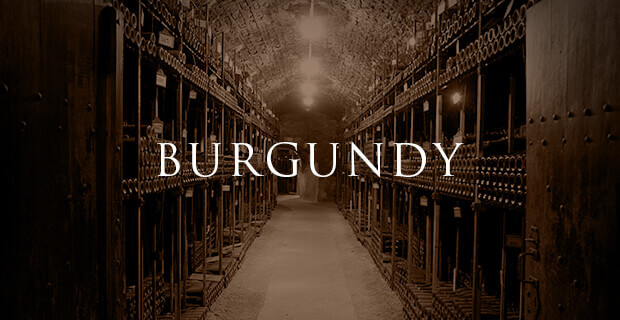
To most, the word « Burgundy » is synonymous with wines of the highest quality. This region, situated between Paris and Lyon, is renowned for producing some of the most exquisite, age-worthy and expensive white wines and red wines in the world. Unlike the famous blends of its brother Bordeaux, Burgundy specialises in single-variety wines made from Chardonnay and Pinot Noir, considered the flagship grapes of the region, along with some Gamay and Aligoté. Perhaps more than any other wine region in the world, the characteristics of the land matter most here, and the wines are created to offer the purest possible expressions of the latter.
A Brief Summary of Burgundy’s Long Winemaking History
As is true for most regions in France, winemaking in Burgundy can be traced back to the ancient Roman Empire. But it was really the monasteries established in the region in the Middle Ages that can be credited with the winemaking legacy Burgundy enjoys today. The Benedictine Order founded the Abbey of Cluny in 910 and became the first big vineyard owner in the region. In 1098, the Cistercian Order was founded. The Cistercian monks were responsible for the creation of the largest walled vineyard of Burgundy, Clos de Vougeot, in 1336. They were also the first to really study the characteristics of different vineyard plots, laying the foundation for the Burgundian concept of terroir.
During the 18th century, the quality of roads in France was improved, and the first négociants (wine merchants) of Burgundy were established in the 1720’s and 1730’s to help push the region’s wines to the booming Parisian market. Production in Burgundy remained in the hands of the church until the French Revolution of 1789, after which the vineyard properties were broken up and sold. The strict inheritance laws put forth by Napoleon at this time resulted in the thorough subdivision of some of Burgundy’s most precious vineyards, leading to many growers each owning very small pieces of land (in some cases, only 1 or 2 vine rows). This system contributed to the proliferation of small family-owned wineries. It also led to the establishment of great négociant estates, which would buy grapes from many different growers and produce a single wine from the aggregate. Eventually, these négociant estates acquired land of their own, giving rise to négociant-producers, like the famous Louis Latour and Domaine Chanson Père & Fils.
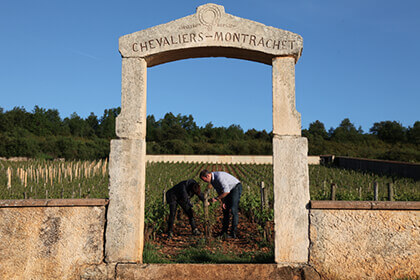
On the heels of the 1855 classification system of Bordeaux, requested by Emperor Napoleon III, a man by the name of Dr. Jules Lavalle published a book, in which he included an unofficial 3-tier classification of Burgundy vineyards. In 1861, this system was formalised by the Beaune Committee of Agriculture and most of the “first class” vineyards were established as Grand Cru appellations with the implementation of the official AOC system in 1936.
Burgundy suffered greatly from the economic depression of the 1930’s and World War II, which left behind neglected vineyards with soils devoid of nutrients. When growers returned to their land, they began fertilising their soil, spraying the soils with chemicals, which eventually proved to be quite harmful in large quantities. Between 1985 and 1995, many Burgundy estates renewed their effort, focusing on limiting their yields to produce higher quality wines. In order to counteract the negative effects of chemical fertilisers, many producers eliminated the latter, switching instead to more sustainable organic or biodynamic methods. Domaine Leroy is known as one of the pioneers of the biodynamic movement in Burgundy, with the totality of its 21 hectares, 99 ares and 66 centiares entirely cultivated under biodynamic principles since 1988.
The Burgundian Appellation System and Concept of “Climat”
Winemakers of Burgundy considered “climat” the DNA of their wines. But what exactly is climat?
Perhaps Bernard Pivot said it best: “In Burgundy, when we speak about a “Climat”, we don’t look up at the sky. We look down at the ground”.
The term “climat” is believed to have originated in the 16th century and received UNESCO World Heritage status in 2015. A climat encompasses the wide range of terroir related characteristics of specific site: its geography, geology and cultural diversity. In total, there are 1247 climats in the region, many of which have been delineated and named for centuries. Climats make an appearance in the discussion of the Burgundian appellation system, which is arranged in a hierarchy of four levels.

The simplest, most cost-friendly, easy-drinking Burgundy wines are classified into 23 “Regional” appellation AOC’s, which include the word “Bourgogne” (Burgundy) on the bottle. Next up on the pyramid are the 44 “Communal” or “Village” appellation AOC’s, which bear the name of the village in whose surroundings the wine is produced. Example include Beaune, Mercurey (producing mostly red Burgundy), and Pouilly-Fuissé (specialising in white Burgundy). Within these village appellations, certain climats (or plots) have been identified as having the highest quality terroir and classified as “Premier Cru.” Wines at this appellation level include on their label the name of their commune/village of origin, followed by the term “Premier Cru” (or “1er Cru”). Sometimes the historic name of the climat is also included on the label, as in Meursault 1er Cru "Les Perrières,” Volnay 1er Cru "Les Caillerets,” and “Beaune 1er Cru "Les Marconnets."
At the very top of the appellation pyramid are the rare Grand Cru wines, representing a mere 1.5% of the region’s total production. These are the most exquisite, elite and exclusive of Burgundy wines, produced on the most famous plots, of which there are 33 in total. These wines will always bear the term “Grand Cru” on the label, along with the name of the Burgundy vineyard of origin, rather than the commune/village where that vineyard is located. Perhaps you’ve heard of a little Grand Cru called Romanée-Conti?
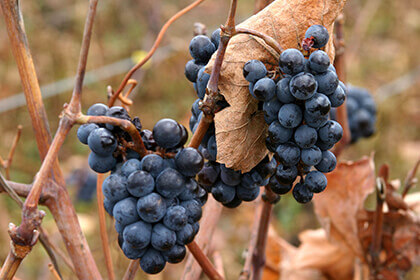
Some of Burgundy’s best known producers, including the historical Maison Louis Jadot, Oliver Leflaive and Bouchard Père & Fils, produce wines under all four of these appellation levels: Regional, Village/Communal, Premier Cru and Grand Cru.
The Geography of Burgundy
Situated in eastern-central France, the Burgundy region comprises 5 primary growing area: Chablis & Grand Auxerrois, the Côte de Nuits, the Côte de Beaune, the Côte Chalonnaise and the Mâconnais.
Chablis is the northernmost Burgundy region and not geographical connected to the rest of Burgundy. This land is traversed by the Serein River, and is home to a climate similar to that of nearby Champagne: hot summers are followed by harsh, very cold winters and often frost in the springtime. Chablis is known for its Kimmeridgian limestone soil, whose white, chalky texture retains the heat from the sun, helping grapes ripen. Chablis is best known for its unoaked Chardonnay Burgundy white wines, offering citrus and white flowers aromas and a signature flinty minerality. Producers like William Fèvre and Billaud-Simon produce wonderful expressive Chablis wines. Often counted together with Chablis due to proximity, the Grand Auxerrois is home to many very old, small Burgundy vineyard plots, categorised into four specific terroirs: the Auxerrois, Tonnerrois, Vézelien and Jovinien. Vines of Chardonnay, Aligoté, Pinot Noir and Gamay stretch their roots into limestone soils, producing a wide range of red and white Burgundy wines, on a variety of Regional and Communal/Village appellation levels. Saint-Bris is exceptional in that it produces aromatic Sauvignon Blanc wine, rather than the traditional Burgundy varieties.
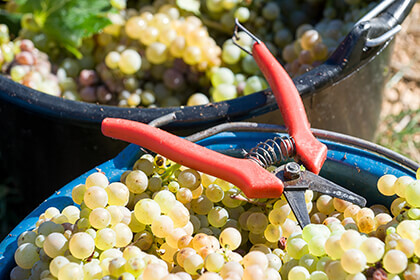
Situated between southern Dijon and the village of Corgoloin, the Côte de Nuits is home to 24 Grand Cru vineyards and produces some of the most expensive, and age-worthy wines of the world. Around 80% of the total production here is of Pinot Noir, with the rest being either Chardonnay or rosé (as in Marsannay). These Grand Cru vineyards are located on eastern slopes, facing the Saone River nearby. They go from Gevrey-Chambertin and Morey-Saint-Denis in the north down to Vougeot and Vosne-Romanée in the south of the region.
Southwest of the Côte de Nuits, the Côte de Beaune region is home to a very different terroir, with rolling valleys and more southerly exposure in terms of climate. Together, the Côte de Nuits and Côte de Beaune form the Côte d’Or (or “The Golden Coast”), named after the emblematic limestone ridge running through the region. Many of the most famous producers of Burgundy, great names like Domaine Faively, focus on producing wine in these precious soils. The Côte de Beaune is divided into a northern and southern section. In the north, around the hill of Corton, mostly Pinot Noir is produced. The southern part is home to various Montrachet sites (the most prestigious being Le Montrachet), specialising in rich Chardonnay whites.
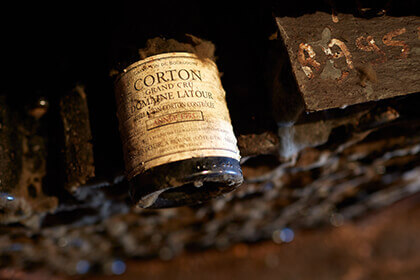
Still further south of the Côte de Beaune is the Côte Chalonnaise, situated between the towns of Chagny and Saint-Vallerin and comprising five key communes: Bouzeron (specialising in Aligoté white Burgundy wines), Rully (specialising in Crémant de Bourgogne), Mercurey, Givry and Montagny. While the terroir of Côte de Beaune to the north is strictly defined by its limestone soils, the vineyards of the Chalonnaise are home to a more varied patchwork of soils, including Jurassic limestone and marl, eroded pebbles and clay. There are no Grand Cru vineyards here, though some of the communes have several Premier Cru level sites.
Finally, the Maconnais region is located between the towns of Tournus and St. Veran, making it the most southerly Burgundy region. The climate here is significantly warmer, with harvest often occurring 2 full weeks before that of Chablis. This difference is apparent in the riper Chardonnay wines for which this area is best known. Pouilly-Fuissé is perhaps the most famous appellation in the Maconnais region, producing well-structured, full-bodied Chardonnay wines with ripe stone fruit, honeysuckle and citrus peel aromas.
The Burgundy Style
Unlike the big, bold wines of Bordeaux, Burgundy wines are known to be more delicate in texture, though just as nuanced in flavour. The classic Burgundy white wine is 100% Chardonnay (although Aligoté has been growing in popularity among consumers), with floral, vegetable and fresh white fruit flavours in their youth and dried fruit, spice, mineral and undergrowth nuances after time spent ageing in the bottle. The classic Burgundy red is 100% Pinot Noir with fresh red fruit flavours, along with floral and vegetable notes, which develop into candied fruit, spice, mushroom, animal and undergrowth notes with time. These are wines with fantastic ageing potential, sought after by collectors around the world.